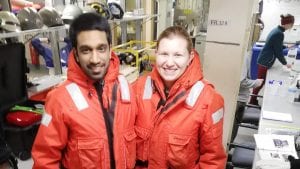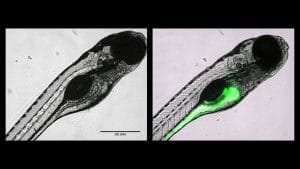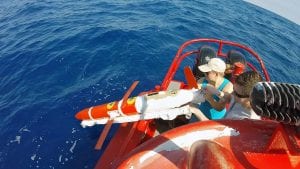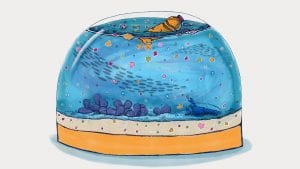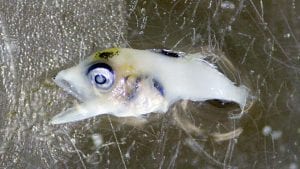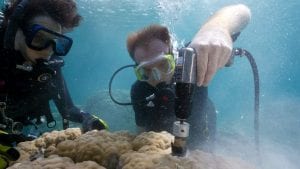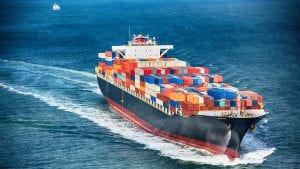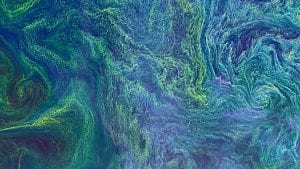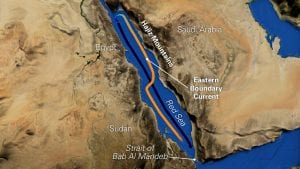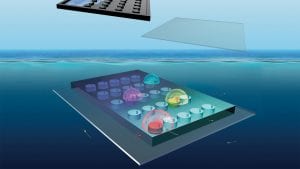Students
- People Directory
- Ombuds
- Humans of WHOI
- Ocean Pioneers
- Profiles & Interviews
- Testimonies & Briefings
- Awards & Recognition
- B.H. Ketchum Award
- B.H. Ketchum Award Recipients
- Dr. Don Anderson
- Dr. Candace Oviatt
- Dr. James Cloern
- Dr. Richard Garvine
- Dr. John Farrington
- Dr. Nancy Rabalais
- Dr. Willard Moore
- Dr. Ronald Smith
- Dr. Christopher Martens
- Dr. Scott Nixon
- Dr. Daniel Lynch
- Dr. William Boicourt
- Dr. Alasdair McIntyre
- Dr. John S. Allen
- Dr. Thomas H. Pearson
- Dr. Michael Moore
- Prof. Edward D. Goldberg
- Call for Nominations
- B.H. Ketchum Award Recipients
- Henry Bryant Bigelow Medal in Oceanography
- Henry Melson Stommel Medal
- Mary Sears Women Pioneers in Oceanography Award
- WHOI scientists recognized for outstanding achievement
- B.H. Ketchum Award
- Community Committees
- Obituaries
Tracking Radium in the Arctic
Jessica Dabrowski is an ocean chemist and a second-year graduate student in the MIT/WHOI Joint Program in Oceanography and Applied Ocean Sciences & Engineering. She travelled to the Arctic for…
Particles on the Move
An MIT-WHOI Joint Program student investigates what happens to nanoplastics once they’re ingested by fish.
Gliders Reveal Tango Between Hurricanes and the Gulf Stream
Spray gliders cruising the east coast are collecting ocean measurement data that hurricane forecast modelers can use to improve storm intensity forecasts.
Tracking a Snow Globe of Microplastics
Millions of tons of plastics end up in the global ocean each year, but where does all that material go once it gets there?
The Secret Tuna Nursery
WHOI biologists and physical oceanographers combine expertise to reveal a place in the ocean where some tuna are born.
How Do Corals Build Their Skeletons?
WHOI scientists discovered precisely how ocean acidification affects coral skeletons’ a factor that will help scientists predict how corals throughout the world will fare as the oceans become more acidic.
On (and Below) the Waterfront
The expansion of the New York metropolitan area’s harbor over the decades has led to big but hidden changes in tidal flows that have environmental impacts.
The Living Breathing Ocean
Rainforests have been dubbed the Earth’s lung, but like us, our planet has two lungs. The second one is the ocean.
Mysteries of the Red Sea
The Red Sea also has several characteristics not seen in other oceans: extremely warm temperatures, high evaporation rates, odd circulation patterns, and a rare current that sometimes disappears in winter.
A Lobster Trap for Microbes
What if you wanted to observe what microbes in the ocean are doing? First, you lure them into your field of view.

